|
Author
|
Topic: NASA red number photo versions, desirability
|
randyc
Member Posts: 873
From: Denver, CO USA
Registered: May 2003
|
 posted 06-08-2023 05:41 PM
posted 06-08-2023 05:41 PM
   
I recently bought three NASA red-number photos and have a question regarding the different versions that I've seen. The ones I have are: - S-65-29766: Ed White Spacewalk
- AS11-40-5875: Aldrin and U.S. Flag
- AS17-148-22727: Apollo 17 'Earth Blue Marble'
It looks like there is something printed on the back of each photograph, perhaps 'A Kodak Paper' or 'This Paper Manufactured by Kodak' but the printing is so faded that it is barely visible.When I looked for these photos on auction sites I found a version of the Apollo 11 and Apollo 17 photos that had a description of the photo printed on the back (the Gemini 4 photo I found did not have a description printed on the back). Based on what I found I have the following questions: - Which version of these photos were printed shortly after the mission? Are the ones without the photograph description printed on the back the first version that were printed and the ones with the photograph description on the back printed later (maybe several years later)?
- Is one version more collectible (valuable) than the other?
|
randyc
Member Posts: 873
From: Denver, CO USA
Registered: May 2003
|
 posted 06-17-2023 12:21 PM
posted 06-17-2023 12:21 PM
   
In addition to the original questions I'm interested in the opinions of NASA photograph collectors regarding the following questions: - What is the history of NASA blue numbered photographs and why are they less collectible (valuable) than red number NASA photographs?
- How collectible (valuable) are NASA photographs from the 1960s and 1970s that were reprinted by NASA but have the NASA 'worm' logo?
- How collectible (valuable) are NASA photographs from the 1960s and 1970s that were reprinted by NASA but have the NASA 'meatball' logo?
|
Chuckster01
Member Posts: 1100
From: Orlando, FL
Registered: Jan 2014
|
 posted 06-17-2023 04:26 PM
posted 06-17-2023 04:26 PM
   
Ok I think I can answer a few of these questions and please correct me if I am wrong.Until about Apollo 17, all the color and a few black and white photographs from NASA are printed on A Kodak Paper. About 1972 NASA changed to "This paper manufactured by Kodak" paper with some Apollo 17 and early Skylab photos printed on remaining stock of A Kodak Paper. This should be well known. - The photographs with the descriptions on the back are mostly for press release and PAO distribution while the ones with blank backs where mostly retained by NASA employees and astronauts who already knew the image origin.
The black numbered (black and white) and red numbered are the same, just red does not work in black and white. - From numerous auctions (and the purchase of over 5,000 photographs) I feel the value of the photos is unaffected by the lack of printing on the reverse. It is the content of the image that drives value. Iconic photographs and lunar surface photos are always desirable.
- I have seen blue and green numberes on A Kodak Paper as well as the textured (canvas) paper and I do not know what these colors represent. I have never seen this on reproduction prints.
- The official NASA reproduction photographs have exploded in value over the past few years as collectors wanting iconic images can no longer afford the originals so the reproductions are a valid choice for official NASA photograph collectors with smaller wallets.
- As with the original photographs the value is in the historic content of the photograph.
An example is an original Gemini red numbered Earth view photograph printed on A Kodak Paper does not have the value of a 1980's Apollo 11 red numbered lunar surface reproduction photograph.
As an avid photograph collector, I always try and buy NASA photos as I feel these are better quality and a true reproduction of the images captured on the mission where as reproductions from third parties are often edited to make the look better.This is my gathered knowledge from 25+ years of collecting photos and 8+ years of running the space auctions. I believe it is accurate. |
Robert Pearlman
Editor Posts: 50769
From: Houston, TX
Registered: Nov 1999
|
 posted 06-17-2023 06:23 PM
posted 06-17-2023 06:23 PM
   
quote:
Originally posted by randyc:
What is the history of NASA blue numbered photographs and why are they less collectible (valuable) than red number NASA photographs?
I posted a version of the following here in 2021, but it seems worth reprinting here for current and future reference:A reader of this site, Joe Wolenski, has written an article about the history of the red numbered photos and authenticating vintage NASA prints. The whole thing is worth reading but here is the relevant section to your question: The presence of red lettering on the front of most vintage NASA photographic prints is often misinterpreted as being a significant factor to establish that photograph's authenticity. The serial numbers are part of the original print, keyed in by an operator using the internegative number as a reference to keep the print consistent with the official photograph designation given by NASA. Once keyed in, the printer reproduced the number on the photographic paper during production. While the meaning of the serial numbers tells us some about the image depicted in the photograph, it is important not to become too carried away with their importance.According to at least two NASA offices and one retiree who worked in the PTL, the color of the lettering is not an indication of any significance. Red ink appears most often, but other prints with black or blue ink do not signify anything particularly special. The difference in color is typically attributable to one of two reasons: (i) the type or version of printer used (most likely reason), or (ii) an off-the-cuff decision by the printer's operator. |
davidcwagner
Member Posts: 1000
From: Albuquerque, New Mexico
Registered: Jan 2003
|
 posted 07-19-2023 06:49 PM
posted 07-19-2023 06:49 PM
   
Have many Apollo-era red, black, blue, or green numbered photos. Does slabbing add value? How much to slab and who does it/website? |
Robert Pearlman
Editor Posts: 50769
From: Houston, TX
Registered: Nov 1999
|
 posted 07-19-2023 06:51 PM
posted 07-19-2023 06:51 PM
   
NASA did not keep a count when printing photos, nor were they all printed at the same time, so no population counts exist. (And, as noted above, the color of the ink was arbitrary.)I can't think of any reason slabbing a glossy photo print would add to its value, unless the purpose was to establish it coming from a specific collection. Maybe others can chime in with their thoughts. |
spacecased
New Member Posts: 1
From: California US
Registered: Jul 2023
|
 posted 07-20-2023 12:29 PM
posted 07-20-2023 12:29 PM
  
Can anyone help me understand a time period or difference in a red letter photo that just has "NASA" and the red letter serial number vs a photo that has additional information such as "Lyndon B Johnson space center" printed on it? Are they both official? What is the difference in collectibility? |
Axman
Member Posts: 87
From: Derbyshire UK
Registered: Mar 2023
|
 posted 07-20-2023 12:46 PM
posted 07-20-2023 12:46 PM
  
quote:
Originally posted by Robert Pearlman:
Maybe others can chime in with their thoughts.
Personally speaking, and not just about glossy photo prints, but slabbing anything in general, actually detracts me from buying it.I collect Marvel comics and I like to be able to see exactly what is inside the comic, and slabbing prevents that. Slabbing doesn't help to preserve an item, it is merely a marketing tool for supposed veracity of an attribute. And those attributes could be better authenticated in other ways. On an additional note, I also think that there should be a better way of authenticating space flown items than slavering them in lucite. It seems a travesty to me. |
Robert Pearlman
Editor Posts: 50769
From: Houston, TX
Registered: Nov 1999
|
 posted 07-20-2023 01:40 PM
posted 07-20-2023 01:40 PM
   
Lucite embedding were not meant as a way of authenticating an idea, but creating a display. Authentication was a side effect of some lucite displays being well documented for their origin and method of distribution.A well-made lucite can make for a very attractive display, especially if the recipient is not a collector. Back to slabbing, perhaps the perfect example was the Armstrong Family Collection. Encapsulating every item made for a quick and straightforward way to identify items from the estate and while not every piece needed that association to be valuable, many are only collectible because they came out of the Armstrong house. quote:
Originally posted by spacecased:
Are they both official?
Yes, they are official, but so are many prints with no letting or numbers at all. Any print that originated from NASA is as "official" as official gets. The markings just point to when and where the print was produced. |
Kenny
Member Posts: 36
From: Johnson City, Tennessee USA
Registered: Nov 2013
|
 posted 07-27-2023 05:05 PM
posted 07-27-2023 05:05 PM
   
I appreciate what I've read here (and elsewhere on the internet) about the "red number" NASA photos. But I have a few questions about some of the later versions of these photos.My dad worked at the Manned Space Center (JSC) in Houston. He has a bunch of "red number" NASA photos with "A Kodak Paper" on the reverse side, like this example from parachute tests he worked on in the early 1960s. 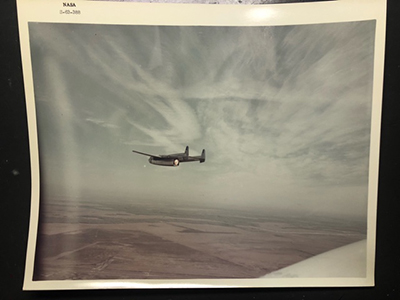 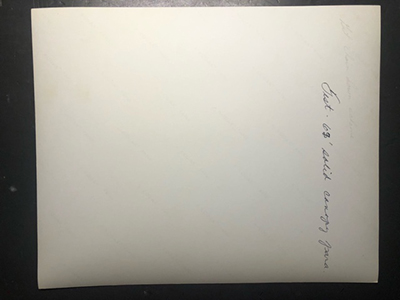
But he also has some early Shuttle Program "red number" photos with "This paper manufactured by Kodak" on the reverse side. 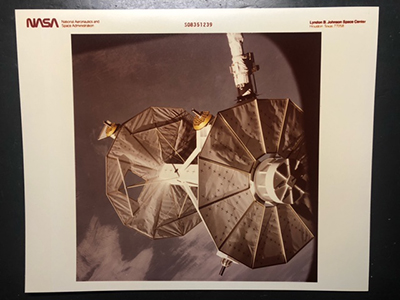 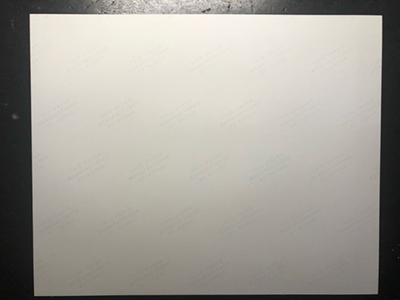
And then he also has a lot of NASA photos (lithographs, really) from the US Government Printing Office, like this one from the Apollo Soyuz Test Project. 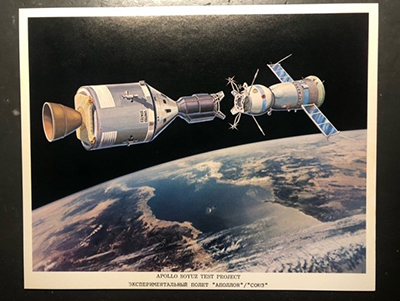 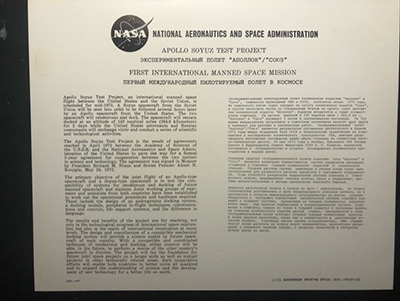
He received all of these photos internally, from NASA. He would call the photo shop and they would send them to his office in a brown envelope. My questions regard the last category of photos -- the lithographs from the USGPO. - When did JSC start giving the USGPO lithographs to employees rather than the "red number" photos? Why did they stop giving employees the actual photos?
- The USGPO lithographs state when the original NASA photo was taken, but is there a way to know when the USGPO lithograph was actually printed? Is there a code on the back that tells us that information?
|

















